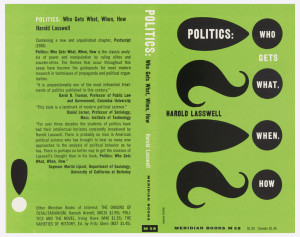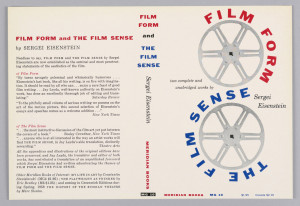You don’t have to be a mathematician to appreciate this visual recipe designed by Elaine Lustig Cohen (American, 1927–2016). An orange pomander studded with cloves, a French red wine from the Rhone valley, and Courvoisier cognac add up to produce the mulled wine served by Elaine and Arthur Cohen at their New Year’s Day parties. Cohen’s invitation design combines photographic images and bold typographical symbols to create a message that is at once clear and whimsical in a style that is decidedly modern. Though this invitation was intended for a more personal audience rather than for mass consumption, in many ways this design reflects Cohen’s approach to creating book covers for Meridian Books and New Directions from 1955 through 1961, work that she was still completing when she designed this card and some of her earliest as an independent graphic designer. Cohen learned much from her seven years of marriage to the influential modernist graphic designer Alvin Lustig (American, 1915–1955), but her work after his death clearly established her own distinct voice and style. While Lustig’s designs were typically very precise and featured a limited selection of colors and typography, Cohen’s book covers—like this invitation—often proved experimental, organic, and expressive.

Book cover, Politics: Who Gets What, When, How; 1958; Designed by Elaine Lustig Cohen (American, 1927–2016) for Meridian Books (New York, New York, USA); Written by Harold Lasswell (American, 1902–1978); Offset lithograph on off-white wove paper; Gift of Tamar Cohen and Dave Slatoff; 1993-31-12
Meridian Books published paperbacks marketed to college students, and previous designs for Meridian covers had demonstrated a unified aesthetic, allowing various volumes to be easily sold as a set. However, with growing competition from paperback publishers in the mid-1950s, book designs increasingly needed to stand on their own in order to sell.[1] Most covers at the time were dominated by pictorial illustrations and straightforward typography, but Cohen’s approach used abstract elements, expressive typography, and conceptual photographs to create distinguished designs that often harmonized with the books’ contents. As we see in this invitation, she clearly embraced the same professional approach to designing more personal objects.

Book cover, Film Form and The Film Sense; 1957; Designed by Elaine Lustig Cohen (American, 1927–2016) for Meridian Books (New York, New York, USA); Written by Sergei Eisenstein (Russian, 1898–1948); Lithograph on paper; Gift of Tamar Cohen and Dave Slatoff; 1993-31-26
Just as the bold black and orange plus signs and equal sign of this invitation distinguish its composition, her 1958 book cover for Politics: Who Gets What, When, How playfully integrates oversized exclamation points and question marks into the front cover’s design, reinforcing the questions in the book’s title. She explores a similar integration of typography and image in her cover for Film Form and The Film Sense, aligning two photographs of empty film reels and wrapping the title text around them like curling film. This New Year’s Day Party invitation embraces a similarly inventive spirit—even the unusually long and thin shape of the invitation serves Cohen’s design—and allows us another opportunity to experience the joyful creativity of the work of this important graphic designer.
[1] Patricia Belen and Greg D’Onofrio, “Elaine Lustig Cohen: The Art of Modern Graphics,” The Shelf Journal, Issue 2, 2012.
